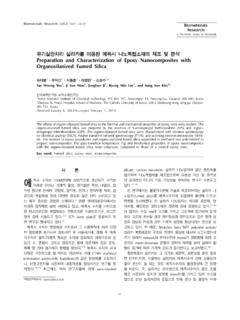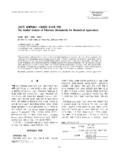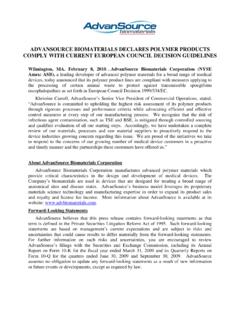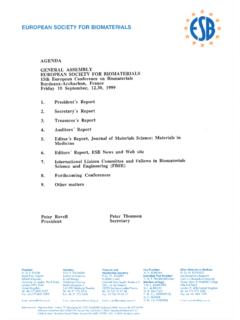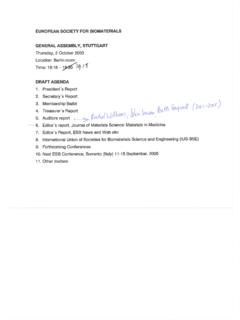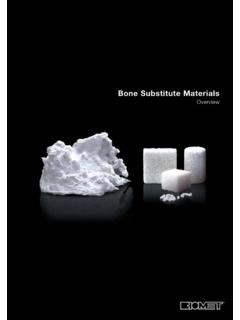Transcription of Hierarchical materials: rational design and …
1 Hierarchical materials: rational design and application in sensing and biomaterials development Nicholls1,2 1 Bioorganic & Biophysical Chemistry Laboratory, Linnaeus University Centre for biomaterials Chemistry, Linnaeus University, SE-391 82 Kalmar, Sweden 2 Department of Chemistry, BMC, Uppsala University, SE-751 23 Uppsala, Sweden The recognition capabilities of molecularly imprinted materials are being successfully exploited in a growing number of application areas. material morphology can be critical for time-dependent application areas such as separation, sensing and catalysis, and even for interaction with components of varying size, as found in biological matrices.
2 Accordingly, strategies for the design and synthesis of imprinted materials with both high fidelity imprints and suitable morphologies is required. We are currently exploring the use of Hierarchical material architectures derived from sacrificial soft scaffolds such as liquid crystalline media in conjunction with molecularly imprinted polymerization reactions [2,3]. Recent progress with these fabrication strategies in the production of nanofibers and ordered mesoporous materials shall be presented, along with examples of the application of these materials in quartz crystal microbalance sensing studies, [4]. Recent work using macromolecular surface based imprinting for generating biomaterials capable of attenuating the complement cascade in whole blood shall also be presented [5].
3 References [1]. Whitcombe, ; Kirsch, N.; Nicholls, J. Mol. Recognit. 2014, 27, 297-401. [2]. Suriyanarayanan, S.; Peroni, L.; Ederth, T.; Nicholls, Chem. Commun. 2013, 49, 5274-5276. [3]. Suriyanarayanan, S.; Wiklander, ; Aastrup, T.; Nicholls, Biosensors 2014, 4, 90-110. [4]. Elmlund, L.; Suriyanarayanan, S.; Wiklander, ; Aastrup, T.; Nicholls, J. Nanobiotechnol. 2014, 12, 8 (article no.). [5]. Rosengren-Holmberg, ; Andersson, J.; Smith, ; Alexander, C.; Alexander, ; Tovar, G.; Ekdahl, ; Nicholls, Biomater. Sci. 2015, 3, 1208-1217.

